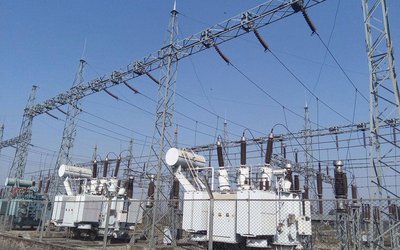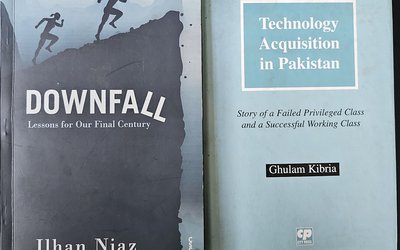At present Nepal is passing through quite an uneasy period of abrupt transition from one political system to another. Discussions are going on about a complete restructuring of the state. Unfortunately, even the most crucial decisions having far-reaching consequences for the entire country are now being taken simply based on the consensus of few selected leaders of political parties totally disregarding the right of the people to approve or disapprove such decision by direct referendum, as in all truly democratic countries. This has led to piling up of all sorts of unfulfilled ever-increasing demands for changes, which might be genuinely in the interest of our people, or intended purely to deceive the country. It is one of the main causes of frequent unrests spreading even in remote corners in a quiet country like ours.
Restructuring under a federal setup has become at present the buzzword in high echelon of our country’s political circle. This matter is extremely serious and requires very careful study. Unfortunately, we are taking it very lightly. We don’t have to go too far to realize the gravity of this highly sensitive problem.
India on the Brink of Civil War
Even in a vast country like India the restructuring or partition of merely one province -original Punjab - into two provinces one for the Sikhs and another for non Sikhs and the sharing of the ownership of Chandigarh city had triggered a virtual civil war that began with the bloody confrontation at Amritsar Golden Temple. The way the province was partitioned had infuriated the Sikhs.
Many top Sikh leaders and non Sikh leaders complacent to the partition were killed. Then Indian Prime Minister India Gandhi was murdered. Indian Sikh army revolted, and as a result they had to be disarmed. Armed unrest spread all across the north-west India. Innumerable innocent people were killed in course of the conflict that continued over a period of several years. There was an indiscriminate massacre of Sikhs in Delhi. Air India plane bound for India even from a far-flung destination like Canada was hijacked.
Indian people had to endure the terrible pain of partition of the state even though they had already once gone through similar dreadful ordeal on a far bigger scale immediately after gaining the independence from the Great Britain.
Separate Homeland for Muslims
The British India was partitioned to provide a separate homeland for the Muslims. The partition was followed by massacres of tens of thousands of Muslims and non Muslims alike. Millions were dispossessed of ancestral homes and their entire other properties after being driven away for good from the places where their families were living since the time immemorial. The murder of Mahatma Gandhi is also linked to the partition.
The chilling memories of the horrifying massacres will ever remain fresh in the mind of those and their descendants who had suffered as a result of the partition. The Kashmir problem still remains as a deep wound of the partition that is not expected to heel up any time soon in future.
Despite the partition, separate homeland for the vast majority of Indian Muslims still remains as an illusion. At present there are more Muslims living in India than in Pakistan.
Strong Unity in Diversity
Nepal is home for people from more than hundred different ethnic groups. People from several such ethnic groups have always been living side by side almost in every village in perfect harmony and close friendship since the ancient time. This has helped to build strong national unity. Many historians are of the view that the national unity ( Hama Gorkhali Hom) had turned Nepal into the most formidable Himalayan power that deterred the Great Britain from converting our country into their colony.
Nepali in India
Historians write that leadership and the character were the hallmarks of the success of Gorkhas. Unfortunately, our present day leaders are not able to reach to the same level of high leadership standard of the past in unifying all communities. In contrast to it the people of Nepali origin living in India are drawing the inspiration from the past glories not to let the Gorkhali spirit to die.
In Darjeeling areas Tamang, Gurung, Limbu, Rai are taking the lead role in uniting all other communities including those inhabiting in the plains of Siliguri region also by reviving the historic Gorkhali spirit. They have succeeded to get recognition of the Nepali as the sole official language. All political parties are strongly advocating the use of daura, suruwal with topee for the male and saree and cholo for the female on all important occasions.
Initially, Nepal Emerged Victorious
After the 1757 Plessey Battle British gained a strong foothold in Bengal and Bihar. Nepal became the next target for British occupation where the national unification champion was slowly gaining momentum. British Governor General Robert Clive infamous in the history for his brutality dispatched in 1767 a big British force under Kinock to capture Nepal. In the ensuing battle Nepal had scored a decisive victory. After this humiliating defeat British never dared to launch another attack for a long time.
For Freedom of South Asia
Several years later in early 1810s Britain had already taken a firm grip on big parts of North India. British had then started to realize that Nepal was already posing a serious threat to further expansion of British rule in India. Thus they decided to go to all out war against Nepal.
British launched in 1814 a preemptive attack even before declaring the war to capture the entire Nepal within a very short period of only about one month. As explained in the book “Rediscovered History of the Gurkhas” the total British strength involved in the war exceeded 2,00,000 ( two lacks). In initial months of the war to the great dismay of the British our country had successfully repulsed the attack.
The British-Nepal War had a great significance for the Asia. Historian C. P. Khanduri looks it from the angle that had the Maratha or Sikhs supported Nepal the history of colonialism in Asia would have had a full stop.
- NOTICE: PoA Design Consultation Meeting
- Aug 24, 2023
- Upper Tamakoshi Hydropower Limited Notice of Issue of Rights Shares
- Aug 17, 2023
- Upper Tamakoshi Hydropower Ltd.'s Notice To Local Share Holders To Open DMAT Account for Dematerialization
- Aug 11, 2023
- China’s Three Gorges And NEA Sign Agreement To Construct West Seti Hydropower Project
- Nov 16, 2017
- Countries Of Hindu Kush Himalayan Region Agree For Collaboration
- Nov 16, 2017
















